
The Man in the Iron Mask
Gabriel Byrne as dashing D'Artagnan, captain of the musketeers (France 1662) protecting King Louis XIV (DVD pics!)

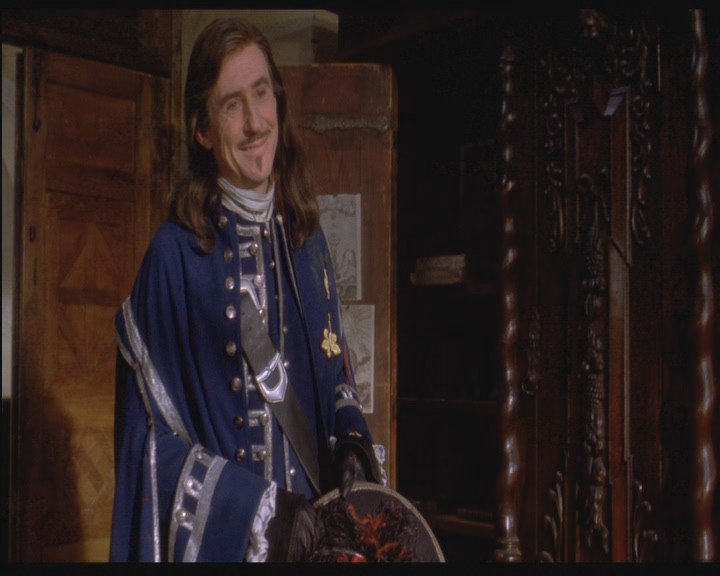





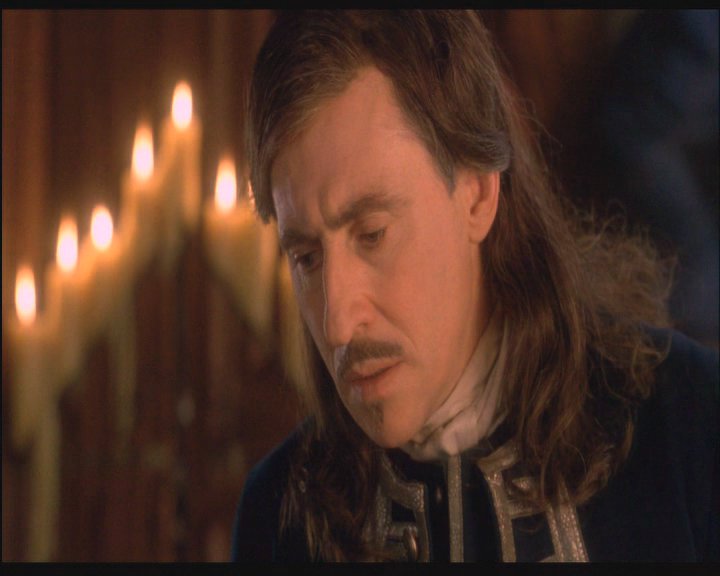

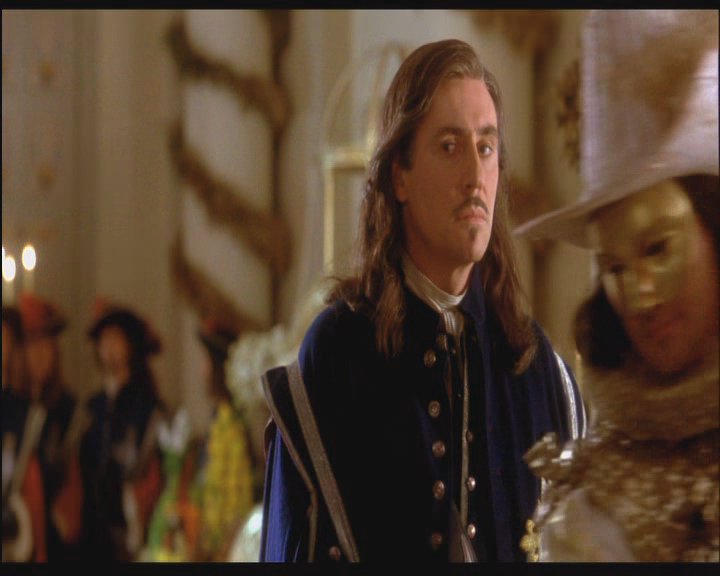
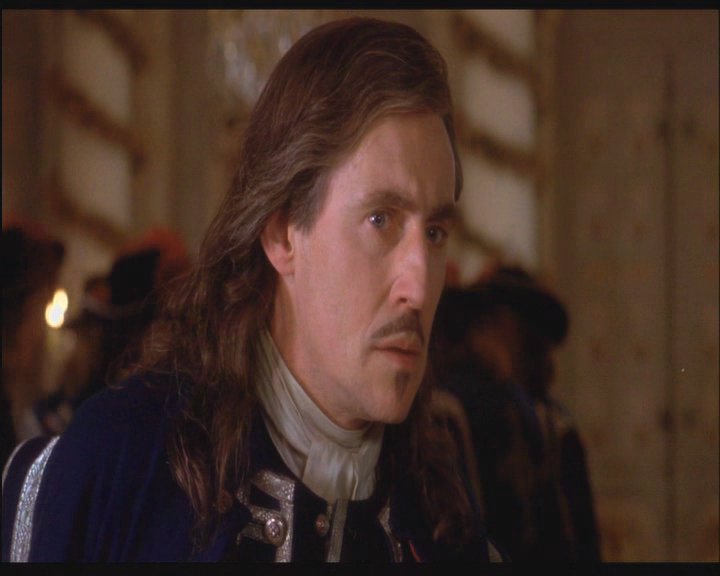
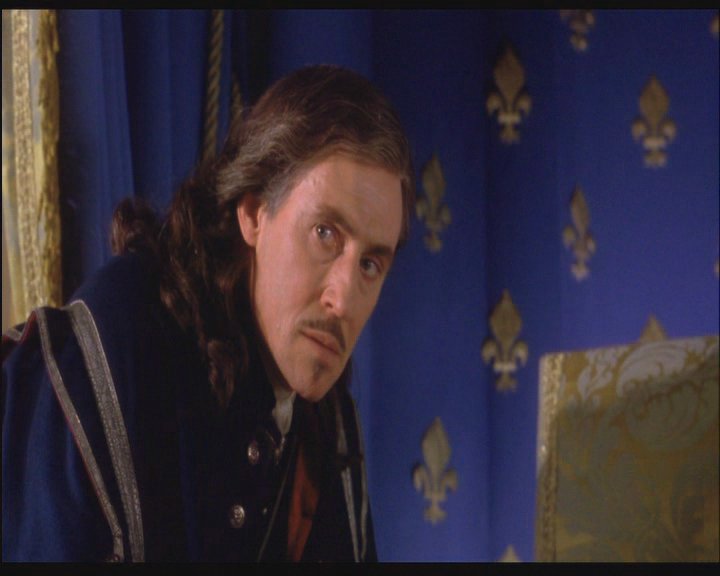





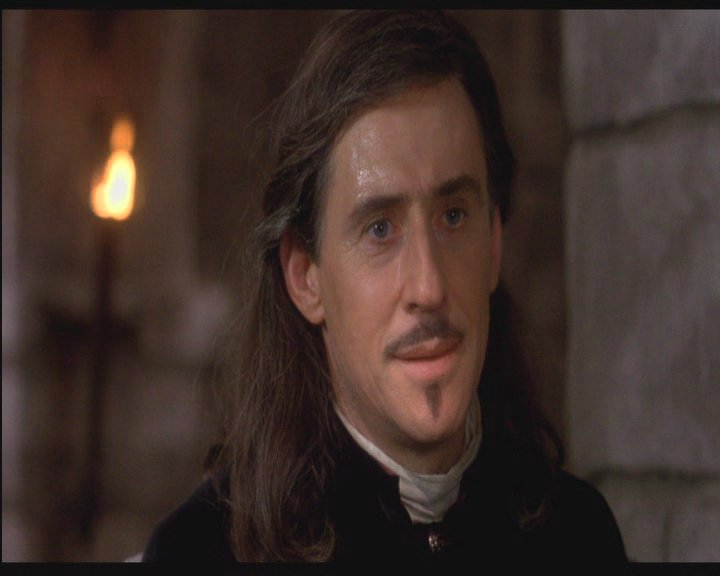

(From: Gold Collectors Series Entertainment Magazine)
The actors:
The principal performers in "The Man in the Iron Mask" agree that the film succeeds largely on the strength of its story and characters.
"The screenplay was sent to me by my American agent", said Jeremy Irons who plays Aramis. "I read it and thought it was a thundering good tale. I wanted to be involved in it... I thought it would be quite fun, and I thought Aramis was quite interesting".
Added John Malkovich who plays Athos. "The thing that really attracted me (to the film) was that Randall was very passionate about it and that I knew he was going to get a great cast. I thought the story worked well".
Gerard Depardieu who plays Porthos said, he thought his character was tailor-made for him. "I'm very happy with this character because he's like me. He's fed up, but he's funny". Depardieu said: "Porthos doesn't want to get old. He has the same problem as the other Musketeers - they've become old. But Porthos is still full of life, and for him it's hard to get older".
Gabriel Byrne who plays the pivotal role of D'Artagnan added, that the story was very original in the way it presented the Musketeers. "It's not the first time we've seen the "Three Musketeers", but it's the first time we have seen them slightly older. They're not young, derring-do, devil-may-care characters that they used to be.... This takes a much more poignant view of them".
Back to Musketeer School:
The word "Musketeer" doesn't just conjure images of long hair, mustaches and high boots. It's also synonymous with swordfighting and horse riding. During the preparation and the shooting of "The Man in the Iron Mask" all of the film's leading men were trained in these two disciplines by Swordsmaster William Hobbs and Horsemaster Mario Luraschi. For some of them it was a discovery, and for others a simple brushing up of acquired skill. But for all, it seemed to be a pleasure.
Irons was among those already familiar with both disciplines. "I'd done some swordfighting a very long time ago", he said. "It's always nice to practise a skill again and I wish we'd done more really. I enjoyed that a lot as well as the riding. I always like it when there is the opportunity to do things in a movie".
Malkovich wasn't quite a novice either, having used a sword in films like "The Libertine" and "Dangerous Liaisons" and others, and ridden a horse in a film called "Le Roi des Aulnes". Dicaprio, however, was new to both riding and swordfighting, but he took it all. "The swordfighting was great. I go to stand in a field and battle with big Johnny Malkovich. It's like anything else. It's like the dancing that I had to do in this film and the mannerisms of the King, all the things that go along with the period. You just have to practise it to the point where you look comfortable doing it and maybe even take it a step further".
For Gabriel Byrne, it was all about attitude. "I've learned from theatre, and it's something that I understood immediately when I was reading this script that half the playing of a character can be in the perception of it. D'Artagnan running down staircases with a sword and jumping off battlements is not what he's about. It's enough to show in one or two very succint movements what he's capable of, and people talk about him in a way that leaves no doubt that, if he's pushed, he is an incredibly dangerous and aigle foe. That's a nice way of saying that I didn't do too much swordfighting".
About the costumes:
More than 1.400 costumes were used in "The Man in the Iron Mask" and at least 70 of those were designed especially for the film. Each principal actor had between five and seven different costumes, which in turn had to be duplicated for their doubles. Most of the crowd costumes were brought in from England and most of the shoes and accesories came from costume houses in France and Italy.
Costume designer James Acheson was more than willing to tackle the challenge of a large production set in the 17th century. "The pleasure of returning to this period is that we can try new things. Most of the clothes we use are from the right period, but we think that some may be as recent as two centuries later. So we've had quite a few people sewing non-stop for two of three weeks. You just wouldn't have the time to design this many frocks".
Fabric designer Jane Clive said the entire proces was time-consuming yet rewarding "The job is enormouw but doesn't look like anything. People think that you just go to a costume house and go, "That's a nice one". I wish! It doesn't work like that. My job is the job that most people dont't know happens".
Jeremy Irons who had not done a 17th-century-period film before said of Acheson and Clive's efforts: "They are great costumes. I wanted ones that were working costumes and I could see myself very easily working and living in them, riding and fighting".
The novel:
"The Man in the Iron Mask" screenplay is based on the great classic French novel by the same name and written by Alexandre Dumas per (the father). Ironically, Dumas never wrote a work titled "The Man in the Iron Mask" The story is taken from the final portion of "The Ten Years", the third book in the trilogy that started with "The Three Musketeers". It is only in this final act that we discover the fates of the musketeers, whose tales of friendship and bravery are filled with such great personal devotion. The cry of "all for one and one for all" is only an echo in this story as the characters have moved on from their youths in the times of King Louis XIII to old age and largely separate lives in the reign of Louis XIV. In the earlier stories, set in the early period of the 17th century France, we learn how the young musketeers committed acts of bravery amid the treachery and designs of Cardinal Jules Mazarin and Armand Richelieu. D'Artagnan, Athos, Porthos and Aramis have all achieved more elevated positions in this later stage of the saga. But it is Aramis, now Bishop du Vannes, and the King's confessor extraordinaire, who holds a secret so powerful it could topple Louis XIV from the throne: locked away in the dungeons of the Bastille is Philippe, the twin brother of the King. Only the Queen Mother, Anne of Austria, is aware of the secret and she has caused all who knew of it to be put to death, or so she thought. This premise is, of course, a contrivance of the novelist Dumas' great literary genius. Still, no greater story could be conceived to explain the French history against which the story is set. Louis XIV was a prodigious spender. The treasury of France was deeply in debt.
To make matters worse, the French superintendent of finances, Monsieur Nicolas Foquet, was eventually convicted as an embezzler. Whether he actually embezzled or was simply convicted of these crimes to exonerate the king from any ill-feeling is never quite clear in Dumas' view. In the third act of the trilogy, we first learn of Porthos - now a man of considerable wealth to match his expanding girth - as he seeks a suit to be made for a fete or party to be given by Foquet in King Louis' honor.
While married to his Queen Maria-Therese, Louis XIV indulged his pleasures with the ladies of the court, not the least of whom was his mistress, Louise de la Valliere. That she had been the fiancee of Athos' son Raoul, we have learned in an earlier part of the story. Athos now, Comte de Fere, spends his days trying in vain to console his consolable son.
D'Artagnan for his part remains the loyal captain of the musketeers. His friends have all gone on to new walks of life, but he remains in Louis' loyal service. He is disposed against Jean-Baptiste Colbert, who covets Foquet's position as superintendent of finance.
Whether he will remain so is an object of the story Dumas spreads out before us. To understand the action of the novel, one must appreciate high hold that duty and honor held on all nobles and gentleman of the time. Not that secret treacheries were not common, but loyalty to the king was always a powerful public approbation. No one dared question teh king's authority publicly. If a note demanding moeny was given to you over signature from the king, you paid it, no questions asked. To fail to do so risked the gallows, the hangmen's noose or the dungeons of the Bastille.
The Three Musekeers Trilogy are historical novels meant to entertain French readers in the 1850s in regard to a period in history 200 years before. The story is filled with intrigue, thrilling chase scenes, pyrotechnics, and battles of both sword and will. As such it provides a superb basis for a modern Hollywood tale of action, adventure, romance and intrigue.
Cast:
D'Artagnan - Gabriel Byrne
Aramis - Jeremy Irons
Porthos - Gerard Depardieu
Athos - John Malkovich
Anne - Anne Parillaud
Louis/Philippe - Leonardo Dicaprio
More The Man in the Iron Mask: Behind the Mask
Soundstudio: D'Artagnan Wavs Interview Behind the Mask
Back to
6 September 1999